Stretching Our Limits
This article first appeared in the April 2022 issue of Adventure Cyclist magazine.
If the COVID pandemic has taught me anything (aside from the more profound truths that life is inherently fragile, every moment counts, and love is all that matters), it’s that I am a cyclist. This realization probably rings true for many across the globe, given our collective return to nature in 2020, as well as the astronomical increase in bicycle sales that followed. Before the global crisis, I’d primarily identified as a yogi. I now identify as a yogi, long-distance cyclist, and bicycle commuter. I live car-free.
Just six weeks before our world took an unforeseen pandemic pause, I befriended an Adventure Cycling ambassador who eventually became my partner-in-crime. He also happens to share my love of yoga and teaches yin yoga to students of all ages among the pine trees, birdsong, and human wildlife of our 75-acre city park in Kansas City. Over the past two years, we explored how beautifully the two disciplines — yin yoga and cycling — complement each other.
Moreover, yoga and bicycle travel are a true balance when one is spending long, jarring days in the saddle. The health and endurance of cyclists increase once they integrate yoga, and more pointedly yin yoga, into their regimen at home and on tour. Yin yoga has been around since the late 1980s. It’s ground-based — perfect for mornings, lunch breaks, or after dinner. You don’t need a formal class. Just one pose can lift you back into the saddle to effortlessly flow over bumpy terrain for another 40 miles or more.
What is yin yoga and why is it ideal for cyclists?
This passive form of yoga benefits cyclists of all kinds. It targets an entirely different area of the body compared to traditional stretches — namely, the fascia and connective tissues, as opposed to the muscles. While various forms of yoga, such as the popular “hatha” yoga, build muscular strength, yin yoga does not. And because cycling also builds muscles but doesn’t target those deeper tissues, yin yoga is cycling’s ideal complement.
In yin yoga, we hold each asana (pose) for two to five minutes while breathing deeply. During this time, we find a comfortable edge where our body is willing to stretch, hold it, and remain as still as possible. The stillness allows us to activate our parasympathetic nervous system, which helps each yin posture to do its healing work on the body, mind, and spirit.
In this meditative state, we take a break from the rigorous cardiovascular exercise that cycling entails. This isn’t the case for all forms of yoga. Vinyasa, for instance, can really get the heart pumping, as can a dynamic hatha class. Yin, on the other hand, invites the body and mind to completely let go and surrender to the present moment. After moving our bodies through a yin practice, we feel rejuvenated, ready to hop back on the bike feeling renewed and refreshed — both mentally and physically.
Anyone who cycles long distances, sometimes for days on end, knows just how grueling the days (and nights) can be. A practice like yin yoga enhances an adventure, while taking the edge off when things get rough. Traveling companions starting to annoy you? Take a break for some inner calm! Going solo? Find solace in your solitude with a yin yoga practice during well-deserved breaks. Need to summon some grounding strength before a challenging stretch of road? Get attuned to your body while warming up with a morning asana sequence. Feeling a bit tight and sore after a long day in the saddle? You guessed it.
How natural laws of gravity come into play
Yin yoga takes place entirely on the ground — perfect for bike travel. A closed-cell sleeping pad makes for a perfect yin yoga mat. Practicing yin yoga outdoors allows us to get grounded, tap even further into Mother Nature’s rhythms, and surrender to the natural laws of gravity. With each inhale, we lengthen every part of the body, lifting upward to the heavens.
Exhaling, we ground down, dropping our bodies along with the earth’s natural gravitational pull. Between each inhale and exhale, we rest in a moment of stillness, which pulls us even closer to the earth. We open our bodies and allow gravity to take us in and out of each pose with integrity and intention.
Yin yoga sequence for a touring cyclist
The following yin yoga sequence works to elongate the vertebrae, open the chest region, and lengthen the fascia and connective tissues. These mechanisms are essential to maintain overall structural integrity of the body as we cycle through the years of our lives.
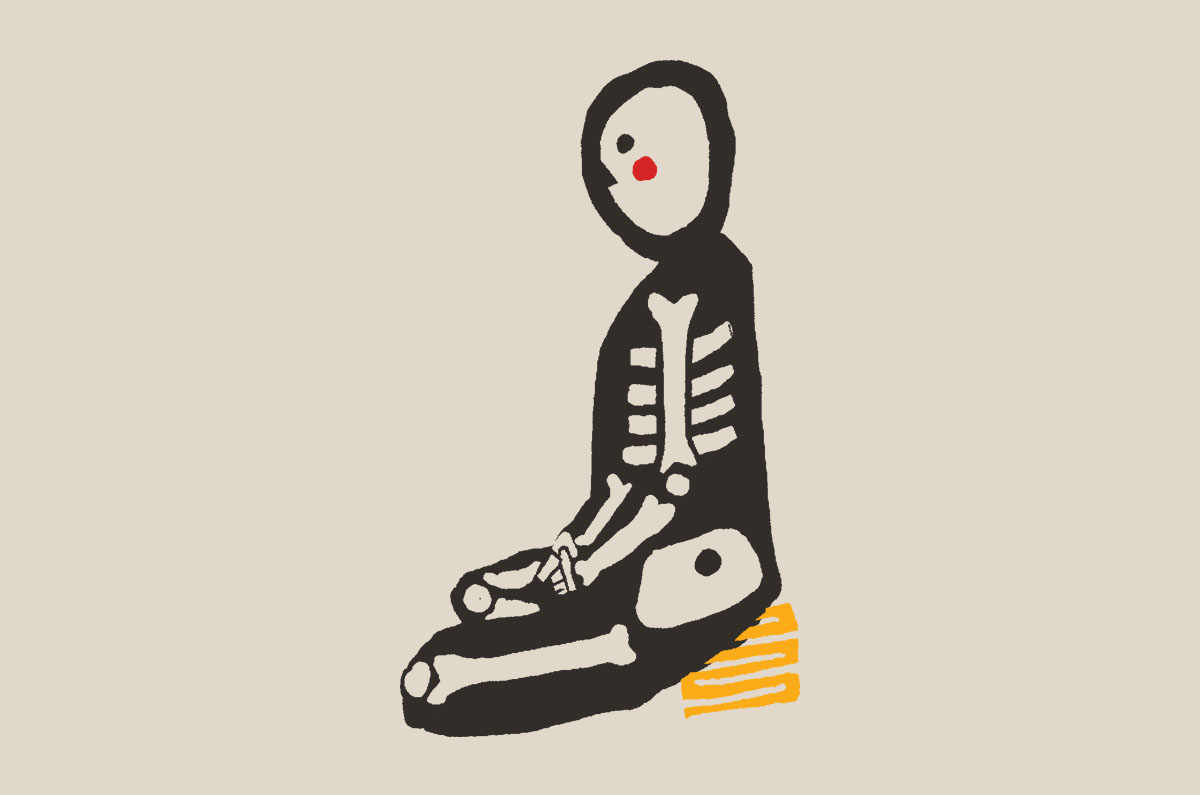
Seated meditation
I like to begin a yin yoga practice by taking my folded sleeping mat off the bike to sit on, which keeps the hips above the knees — ideal for a good meditation posture. Close your eyes and take a few minutes to tune in and focus on your breath. After several rounds of deep inhalations and exhalations, once you start feeling relaxed and ready, roll out your mat and take to your hands and knees for cat/cow pose.
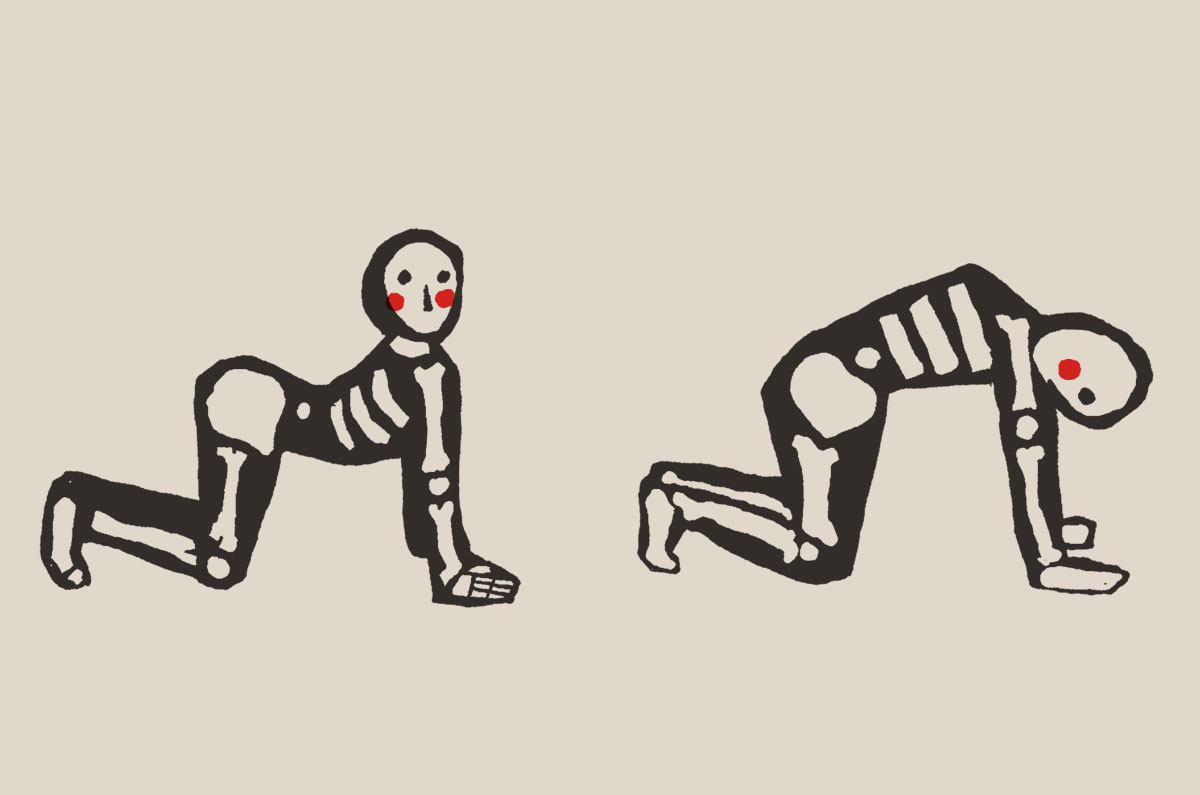
Cat/Cow pose
While this pose is used in all styles, I find it ideal to open a yin sequence. From a tabletop position with hands and knees on the ground and a flat back, simply inhale deeply into cow pose, dropping the back and reaching your head up. Hold for a moment, then exhale into cat, arching the back up and letting your head lower. Again, hold this stillness in between breaths for a moment, and then inhale back into cow. Repeat the cycle several times while focusing your attention on your breath.
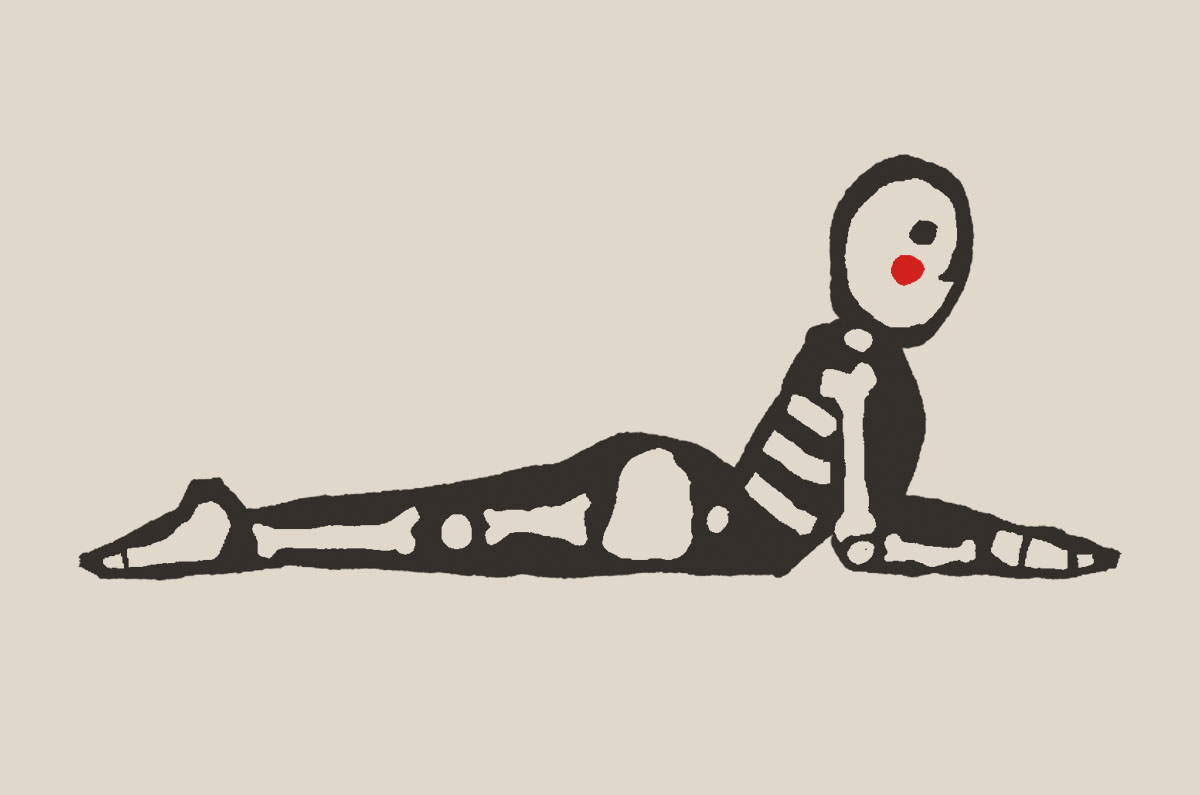
Sphinx pose
From tabletop position, we bring hips and lower abdomen to the ground, place the elbows on the earth with our hands stretched in front of us, and outstretch the legs behind us for sphinx pose. Relax and lower your shoulders away from your ears as you exhale. This position looks exactly as it sounds. It’s perfect for cyclists. All that time hunched forward on the bike needs a reversal. Sphinx pose opens the chest, shoulders, and neck.
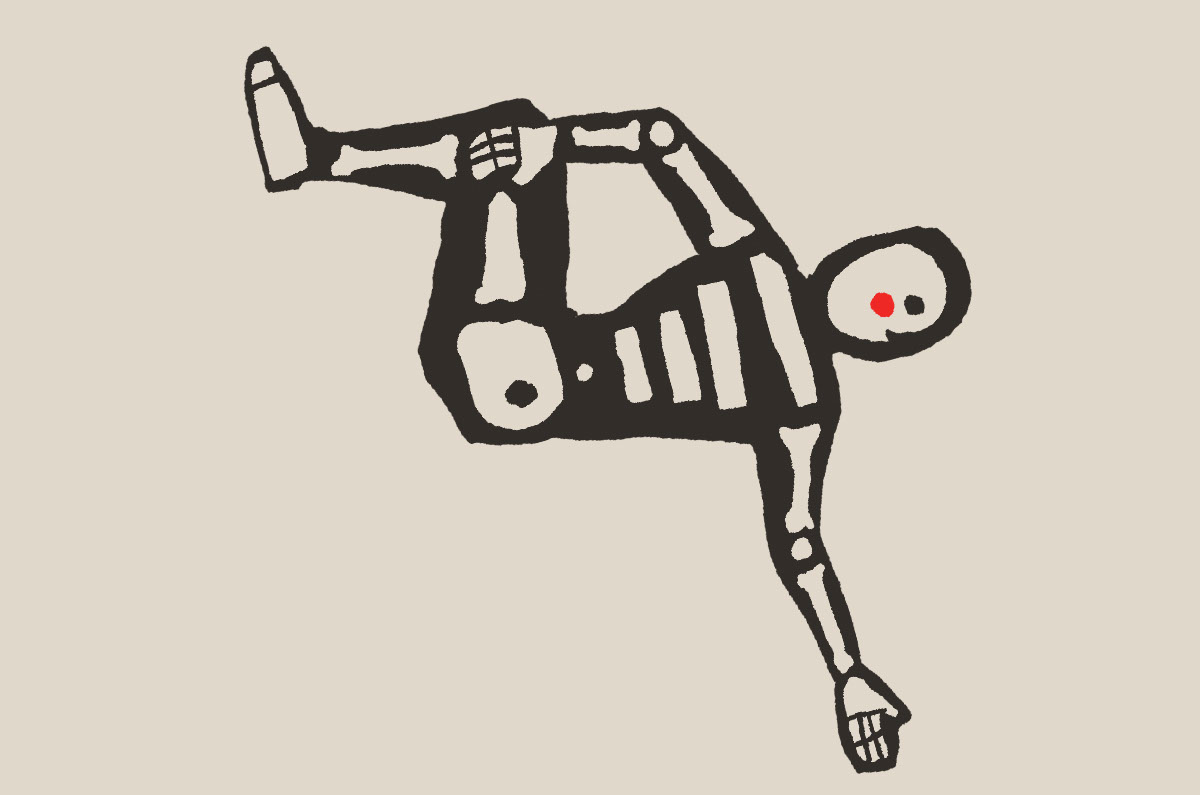
Supine spinal twist
This pose is also known as reclined spinal twist. From sphinx pose, roll over onto your back, hug your knees into your chest, and then allow your knees to fall to the right while twisting your spine and looking to the left. The arms are outstretched in a T. Hold here for two to five minutes while breathing deeply. Then use your core muscles to bring the knees up and over to the opposite side while twisting your torso to the right. Breathe here for two to five minutes.

Supported fetal position
Roll to your right side into a supported fetal position. Breathe here for several breaths, allowing gravity to sink you into your mat and ground you closer to earth.
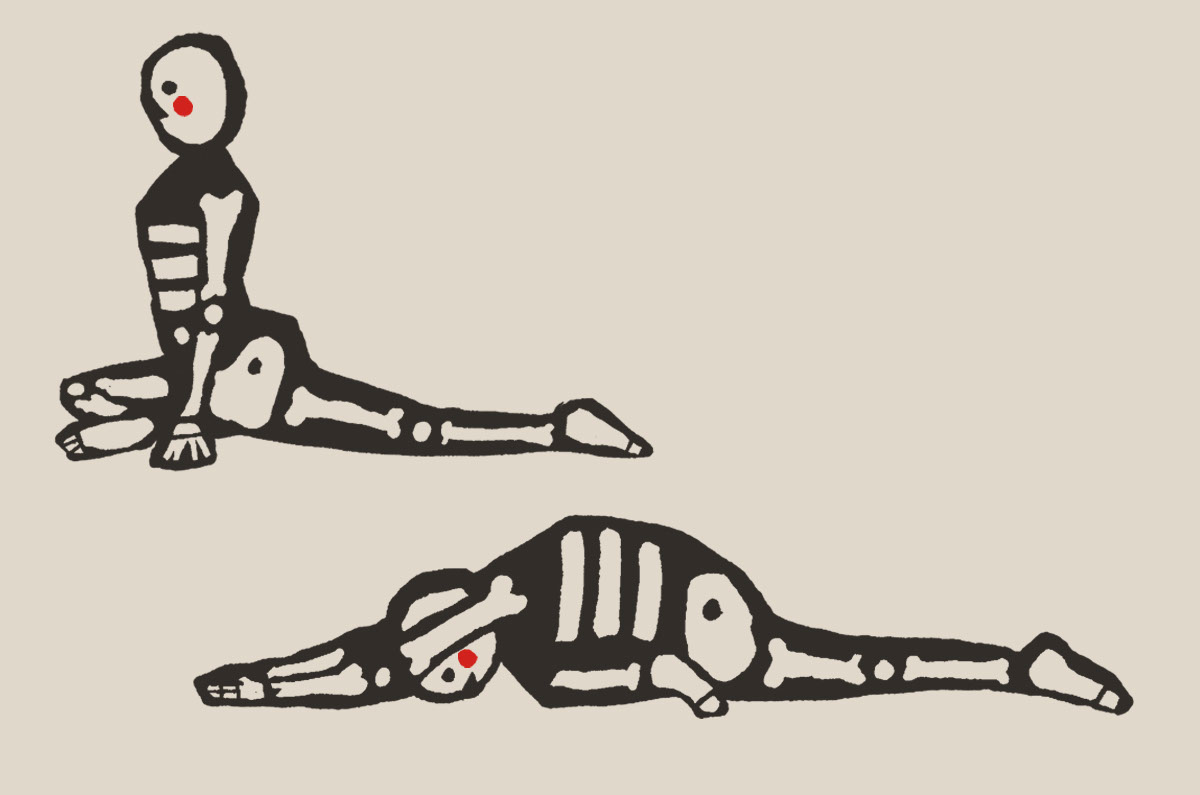
Pigeon pose
From tabletop position, bring your left knee forward so that it’s directly behind your left wrist. Stretch your right leg behind you so it’s parallel to the sides of your mat with the top of your foot resting on the mat (not on your toes like a lunge). Work your left shin and foot toward being parallel to the front of your mat. Your torso can stay upright or fold forward toward the earth. If your hips are tight and holding this pose is a challenge, you can place a rolled-up sweatshirt underneath your hips to help support it. Hold for two to five minutes. When you’re finished with the left side, push yourself up with your arms while kicking your left foot back to meet your right as you lift your butt in the air. You should be in a triangle position with your feet and hands on the mat, your head between your arms, and your butt in the sky: this is downward dog. Move into pigeon on the opposite side. This is the ultimate hip opener, and it’s wise to ease into this pose mindfully. Only move to your edge here. With time, you’ll gain greater flexibility in the hips. Hold pigeon for two to five minutes, then switch sides.

Savasana
At last, savasana, a.k.a. the corpse pose. This is the pose that integrates the benefits of all postures. It’s said to be the most important of all poses, so don’t skip this one! During savasana, we simply lie on our backs, close our eyes, and let the earth envelop us in a warm hug. Stay here and breathe naturally for five to 10 minutes.
Take this yin yoga practice with you wherever you roam. It will carry you further as you become more embodied and aware of your body and mind — both on and off the bike!
To delve deeper into the practice of yin yoga, read one of these books, listen to a podcast, or practice with free online videos.
Book lovers
YinSights by Bernie Clark Yin Yoga: Outline of a Quiet Practice by Paul Grilley
Podcast lovers
The Yin Yoga Podcast with Mandy L. Ryle
YouTube videos
Yoga with Adriene (Adriene teaches many styles of yoga, yin included.)

